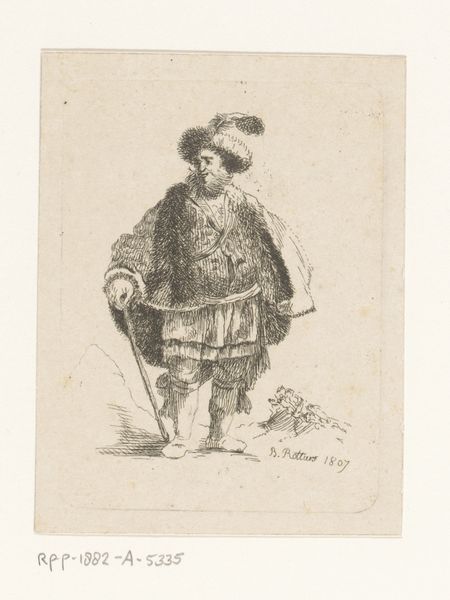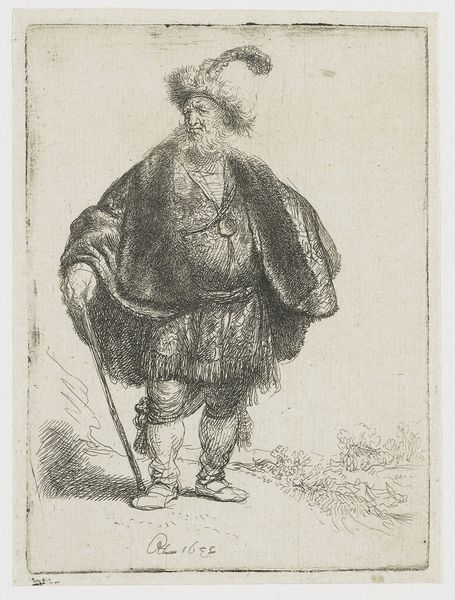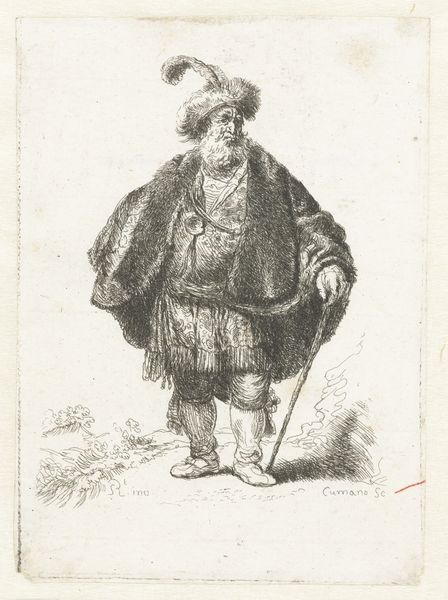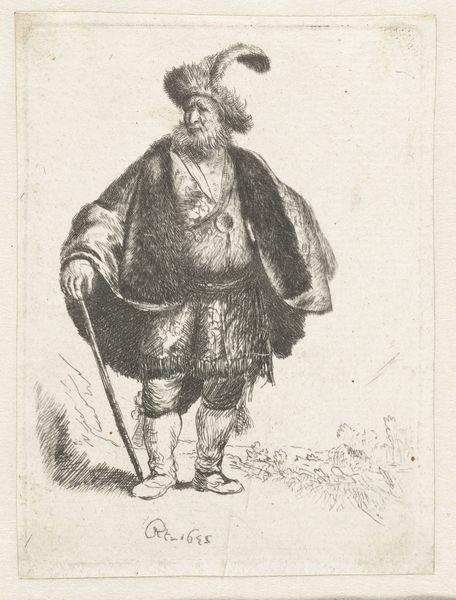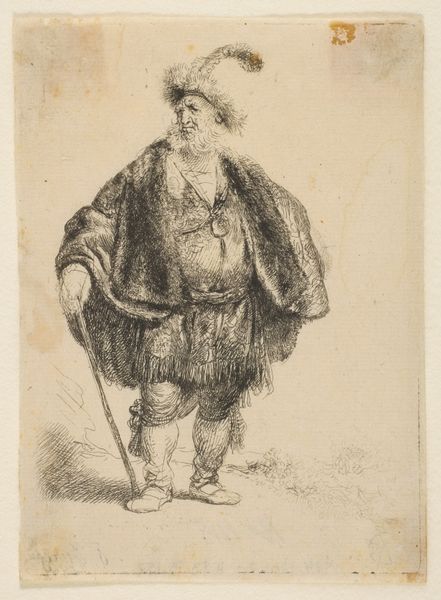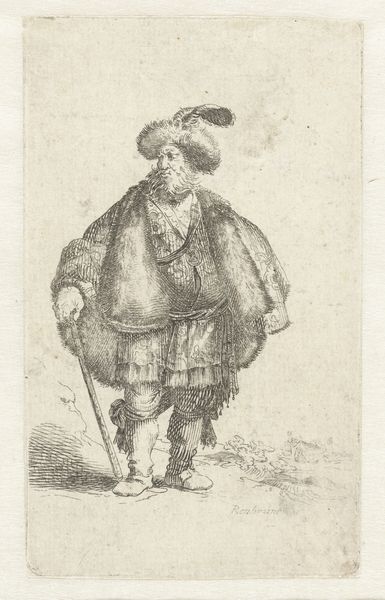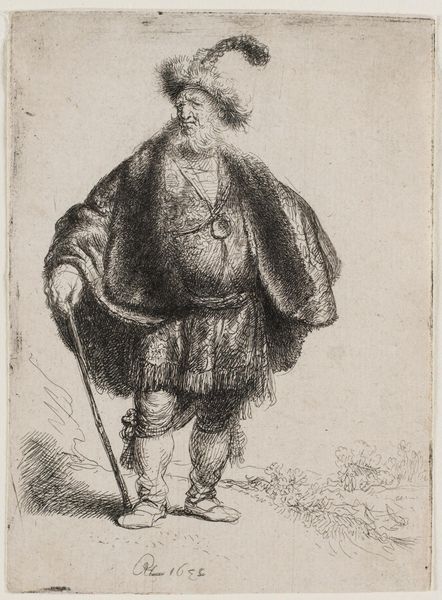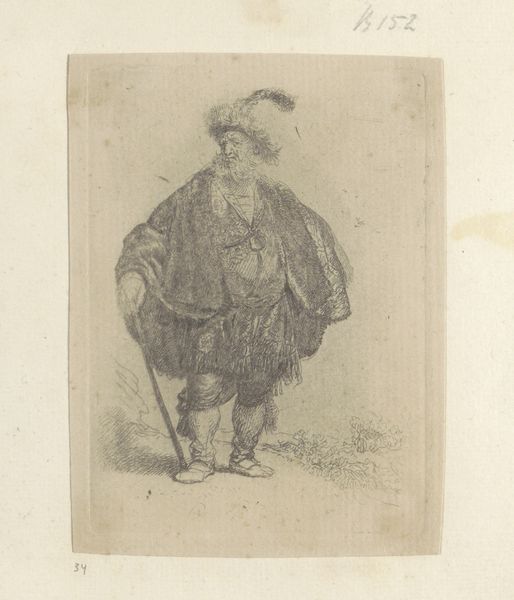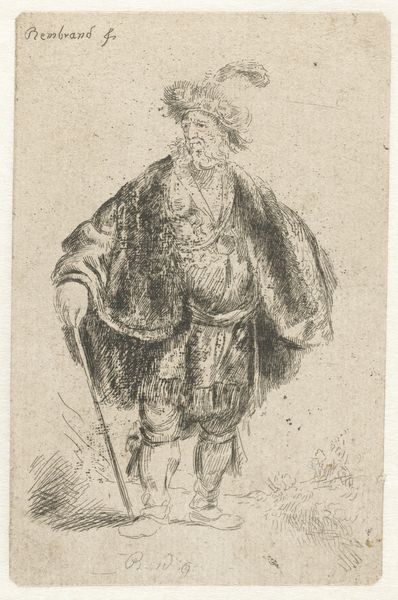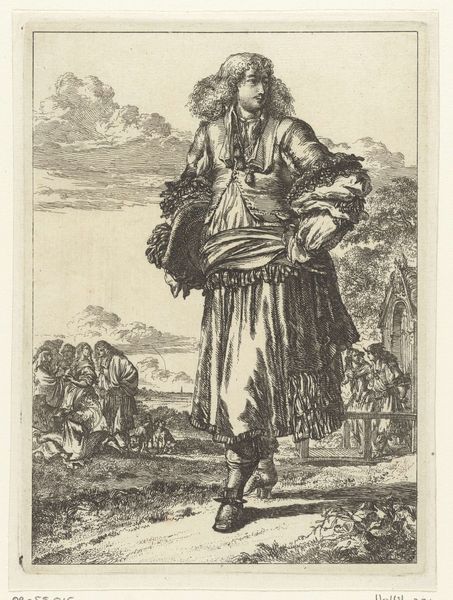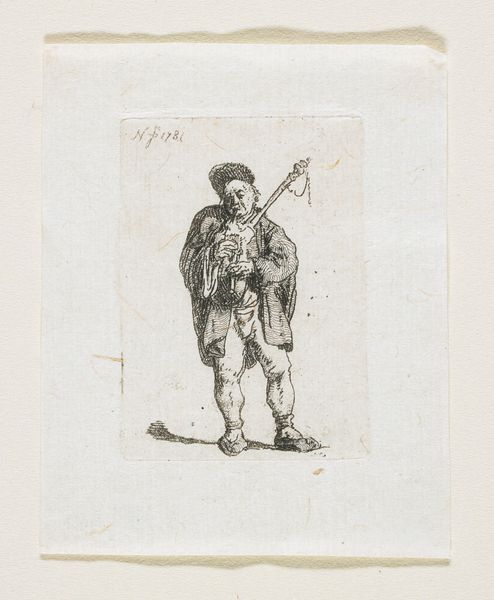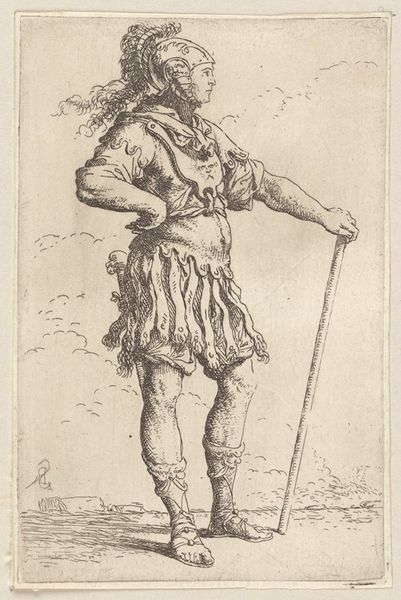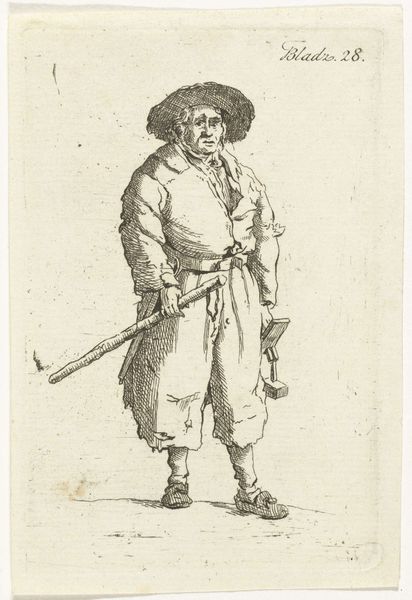
Dimensions: height 106 mm, width 78 mm
Copyright: Rijks Museum: Open Domain
Rembrandt van Rijn created this print titled ‘The Persian’ in the Netherlands during the 17th century. Consider the Dutch Republic, a major center of global trade and cultural exchange at the time, and how that context might have shaped the artist's imagination. What did Persia represent to the Dutch? Was it a symbol of exoticism, wealth, or power? Rembrandt never travelled to Persia and it is likely he never met a Persian. The figure in the image has been styled using the visual codes of Orientalism. His features may seem exaggerated to modern eyes. He wears an elaborate costume that draws on European fantasies about the East. Orientalism shaped European perceptions of non-Western cultures for centuries and these perceptions were often based on stereotypes and misconceptions. To fully understand this print, we need to delve into the history of Dutch-Persian relations, the development of Orientalist imagery, and the role of prints in disseminating these images. The art historian uses archives, libraries, and museum collections to shed light on the social and cultural forces that shaped artistic production.
Comments
No comments
Be the first to comment and join the conversation on the ultimate creative platform.
